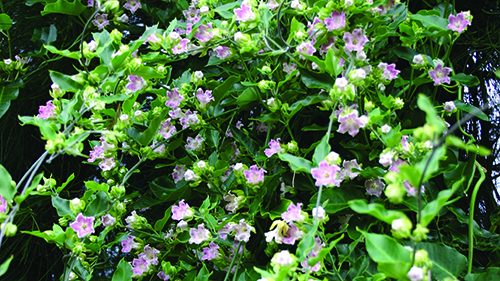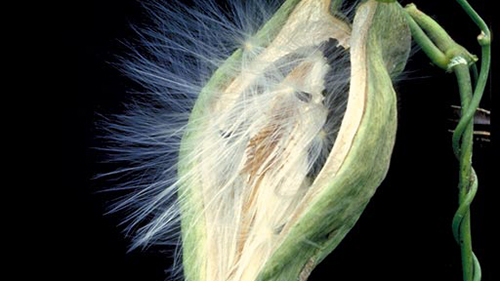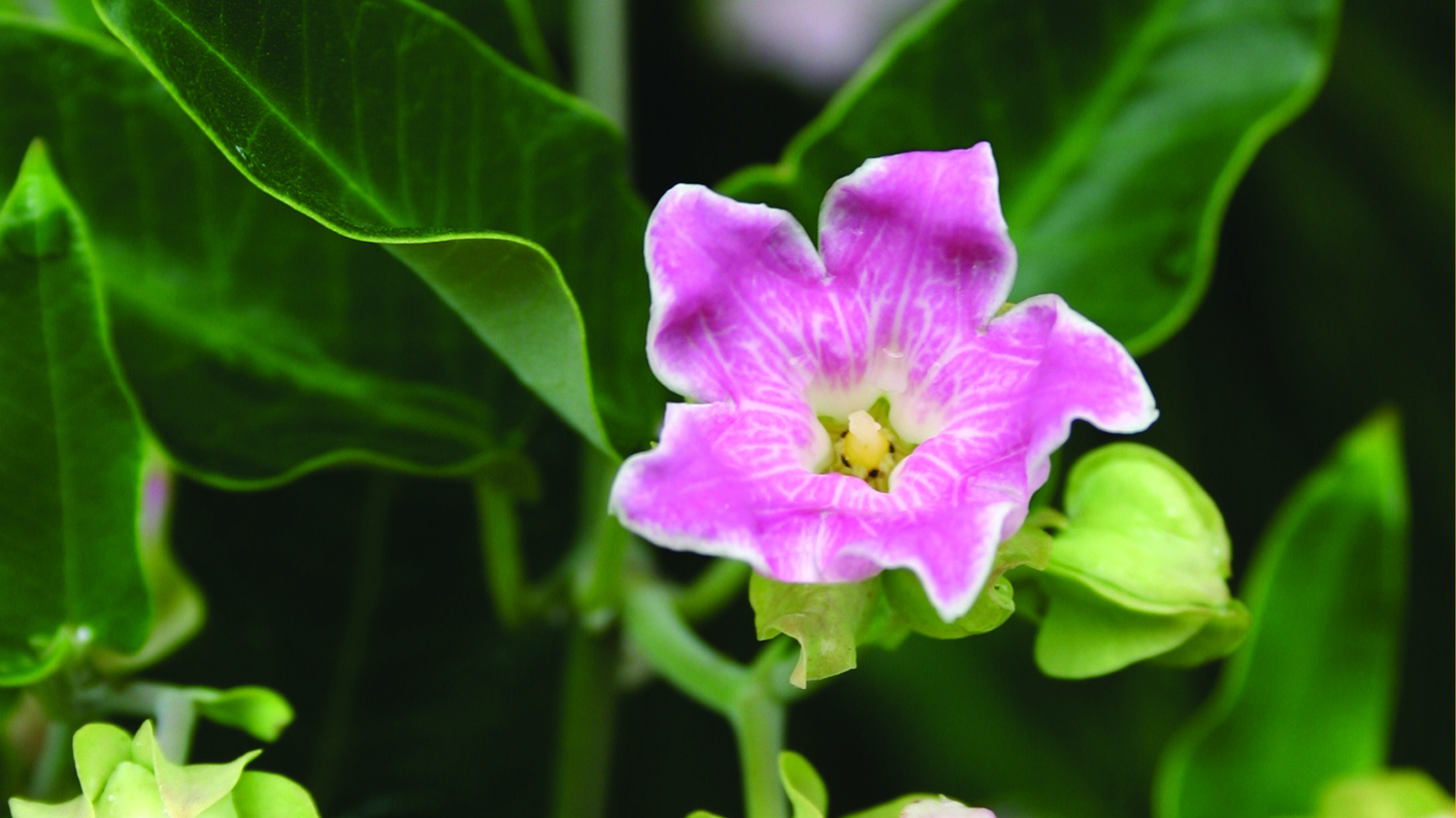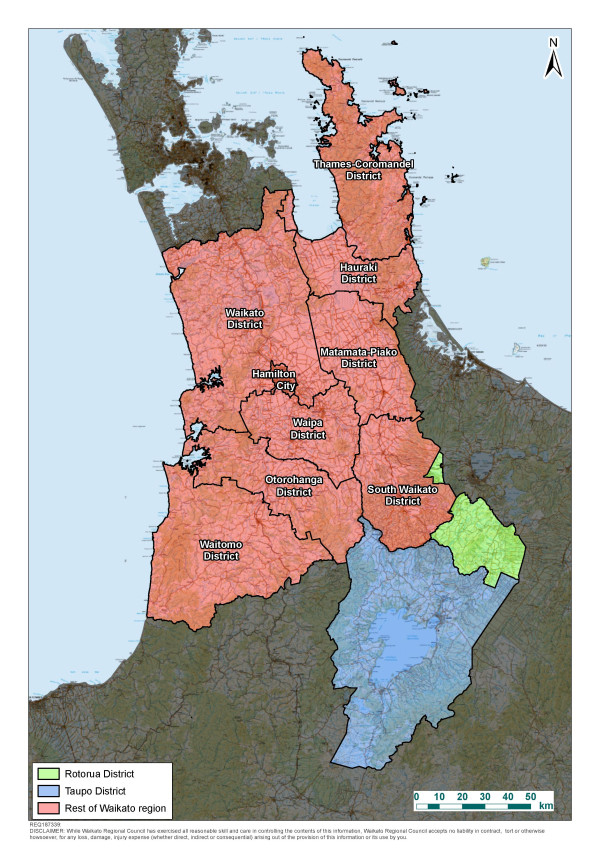| Management programme |
| Progressive containment (Taupō and Rotorua districts within the Waikato region)
Sustained control (excluding Taupō and Rotorua districts) |
| Objectives |
| Reduce the amount of moth plant and the number of locations that have it within the Taupō and Rotorua districts and reduce its impact on nearby land elsewhere in the Waikato region. |
| Impacts |
| Biodiversity, human health, amenity/recreation, animal welfare |
Moth plant, originally from South America, was introduced to New Zealand as an ornamental species in the late 1880s. A fast-growing vine (to 10m tall), it can rapidly smother and replace native vegetation. It invades shrubland, forest margins and coastal areas. Moth plant is also a problem in urban reserves and gardens where is establishes along fences and in hedges, spreading quickly. Butterflies, moths and bees are attracted to its flowers and can become trapped in them, hence the common name ‘cruel plant’.


What does it look like?
Moth plant is an evergreen vine climbing to 6m high. The plant looks different as it ages: slender young vines become woody as the plant matures and starts to branch.
Flowers
- Clusters of small cream to pink bell-shaped tubular flowers are produced between December and May.
Fruit/seeds
- Large pear-shaped choko-like fruit (pods) are produced during summer and Autumn that contain numerous seeds, each attached to silky threads.
- Seed pods dry and split in half to release the numerous seeds.
- Fruit can release a poisonous milk-like, skin irritating sap (latex) when cut or damaged.
- Seeds are poisonous if eaten.
Leaves/stems
- Leaves are opposite, 3-12cm long.
- Smooth leaves are dark green on the upper surface, and downy greyish-green on the underside.
- Downy, flexible, twining stems also contain poisonous milky sap.
Why is it a pest?
Moth plant has naturalised and is now well-established in the neighbouring Auckland and Bay of Plenty regions and common in parts of the Waikato region; it is established in Hamilton and many northern parts of the region including parts of the Coromandel.
Moth plant grows from a short taproot (main root) and other weak shallow roots. It prefers loose, fertile soils in warmer, wet areas. The self-fertile vines are spread mainly by their wind-borne seeds. When the pods dry out, they split open and release large numbers of seeds attached to silky threads. The seeds can germinate in high light and semi-shade and establish long distances from any seed source. Moth plant vines can smother and kill desirable plants and prevent regeneration in coastal environments, on cliffs, in shrubland and along forest tracks and margins and in urban areas.
A recent study notes that the intolerance of moth plant to cold restricts the southern expansion of this pest plant in New Zealand, and the shallow root system is a limitation in dry soils.
While moth plant only occurs in certain parts of the Taupō and Rotorua districts within the Waikato region, the impact of this pest may be significant in these areas.
Control methods
Taupō and Rotorua district (within the Waikato region):
Waikato Regional Council is responsible for controlling moth plant in the Taupō and Rotorua Districts (within the Waikato region) and it is illegal for anyone else to remove or disturb it there.
If you see moth plant on your property in this part of the region, do not cut, treat or try to remove it. Call 0800 800 401 to report it to your local biosecurity pest plant officer.
Waikato region (outside of the Rotorua and Taupō districts):
Physical control (all year)
- Best results are achieved between December and February before any pods are produced.
- Pull out seedlings. Hoe or dig out mature plants, removing as many roots as possible.
- Leave any detached vines in the host tree/hedge to wither and die.
- Remove all seed pods and take them to a refuse transfer station to prevent further spread. Do not burn the pods, compost them or leave them lying around, as seeds might spread.
- Revisit the site after three to five days when missed plants will be obvious. Dig out any remaining vines.
Herbicide control (summer to autumn)
Remove all seed pods from the vine(s) before applying herbicide. As above, do not burn or compost the removed pods or leave them lying around. Take them to a refuse transfer station instead.
Cut vine treatment (for smaller infestations)
Cut stems 20cm above the ground, then coat the stem and hanging ends liberallywith herbicide. Herbicide must be applied immediately after the cut is made. Some herbicides are available in a bottle or gel form, making application easy and convenient.To purchase the herbicide, visit your local hardware, rural supply store or garden centre.
Spray application (for larger infestations)
Spray the plant and totally cover leaf surfaces with herbicide. Apply the herbicide carefully to avoid serious damage to other plants you want to keep. Apply during the active growing season (spring to autumn) for best results.
Safety when using herbicides
- Follow the instructions on the manufacturer’s label.
- Always wear protective clothing.
- Always minimise the risk to your other plants.
- Contact the supplier for further advice.
Summary of herbicides and application methods for control
| Herbicide | Application |
| Picloram (gel) | Cut vine treatment. |
| Glyphosate | Cut vine treatment. |
| Banvine® | Cut vine treatment/knapsack application. |
| Metsulfuron | Spray application – knapsack or handgun. |
| Triclopyr/picloram mix | Spray application – knapsack or handgun. |
| Triclopyr | Cut vine treatment/spray application. |
| Clopyralid | Spray application. |
| Herbicide rules will apply. You may need to notify neighbours if spraying. The Waikato Regional Plan explains the agrichemical (herbicides) use rule in section 6.2. | |
| If applying herbicide over water, a resource consent may be required. Please check with Waikato Regional Council before you begin. | |
Management
After initial control, it’s important to:
- clean out the site again at least annually to control regrowth
- in pastures, apply fertiliser then over-sow with a clover/grass mix
- lift the fertility of the site, which may help prevent seedling growth.
More information
Advice
- For advice and additional information on control methods, call our pest plant staff on freephone 0800 800 401.
- Chemical company representatives, farm supply stores, garden centres or the Weedbusters website can also be good sources for advice.
Publications
- The following publications are available for download or from Waikato Regional Council. Contact us to request a copy (freephone 0800 800 401).





